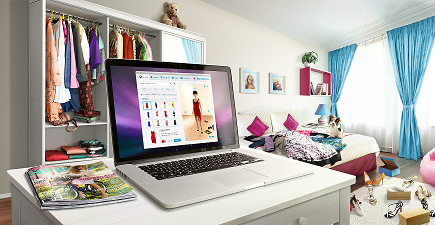Building Your Smart Home: A thorough Guide to Buying Smart
Building Your Smart Home: A thorough Guide to Buying Smart
Blog Article
Within the era of interconnected devices and digital convenience, smart homes have grown to be the epitome of modern living. From managing your lights and thermostat having a voice command to monitoring your home security everywhere in the world, smart home technology offers a wealth of good things about homeowners. However, navigating the world of smart home products can be overwhelming, using a vast array of options and features to consider. On this guide, we'll walk you through the process of buying smart home products, assisting you to build a connected home that fits your needs and enhances yourself.
1. Define Your requirements and Priorities
Step one in buying smart home products is to define your requirements priorities. Consider factors such as your lifestyle, habits, and budget to find out what smart home features are most important to you. Have you been primarily concerned with energy efficiency and residential security, or are you looking to add convenience and entertainment for your daily routine? By identifying your priorities, it is possible to focus your research and make informed decisions about which products to buy.
2. Choose Your Smart Home Ecosystem
Many smart home products operate within specific ecosystems or platforms, for example Amazon Alexa, Google Assistant, or Apple HomeKit. Before purchasing smart home devices, consider which ecosystem you need to build your smart home around. Picking a compatible ecosystem will make sure that your devices work seamlessly together and allow you to control them employing a single app or voice assistant.
3. Start with the Basics
When building a smart home, it's important to start with the basics and gradually expand your setup as time passes. Begin by buying foundational smart home devices that provide essential features and functionality, such as:
Smart speakers: Select a smart speaker with built-in voice assistant capabilities, including Amazon Echo or Google Nest, to control your smart home devices with voice commands.
Smart thermostats: Opt for a smart thermostat that permits you to remotely control your home's cooling and heating system, adjust temperature settings, and create custom schedules to optimize energy-efficiency.
Smart lighting: Upgrade to smart light bulbs or smart switches which can be controlled remotely by way of a smartphone app or voice commands, enabling you to adjust brightness levels, set schedules, and make custom lighting scenes.
4. Expand Your Setup with Additional Devices
Once you have the basics set up, you can begin expanding your smart home setup with a lot more devices to fulfill your specific needs and preferences. Consider purchasing smart home goods that offer advanced features and capabilities, for example:
Smart security camera systems: Enhance security with smart security camera systems that provide real-time video monitoring, motion detection alerts, and two-way audio communication.
Smart locks: Upgrade your home's security having a smart lock that lets you lock and unlock your doors remotely, grant temporary access to guests, and receive notifications when someone enters or exits your house.
Smart plugs and outlets: Add smart plugs and outlets to your house to control traditional appliances and devices remotely, monitor energy usage, and make schedules to automate power settings.
5. Consider Compatibility and Integration
When adding new smart home devices for your setup, you need to consider compatibility and integration with your existing ecosystem. Search for products that are appropriate for your chosen smart home platform and offer seamless integration with other devices inside your setup. Choosing compatible devices will ensure that all your smart home devices interact harmoniously and provide a cohesive consumer experience.
6. Read Reviews and Research before you buy
Before making any purchasing decisions, take the time to read reviews and seek information on the smart home products under consideration. Look for reputable resources, such as tech websites, testimonials, and online forums, to assemble insights and feedback off their users. Pay attention to factors such as performance, reliability, simplicity of use, and customer care to ensure that you're purchasing high-quality products that meet your expectations.
7. Consider Long-Term Costs and Benefits
While smart home technology offers numerous benefits and conveniences, it's important to consider the long-term costs and advantages of investing in smart home products. Element in the initial price of purchasing smart home devices, along with any ongoing subscription fees or maintenance expenses related to using the products. Additionally, look at the potential energy savings, security benefits, and convenience factors that smart home technology provides over time.
8. Begin small and Experiment
Building a smart home is an ongoing method that requires experimentation and adaptation. Don't start to large with a few basic smart home devices and gradually expand your setup as you get more knowledgeable about the technology and its particular capabilities. Try out different features, settings, and automation routines to locate what works best for your lifestyle and preferences. Don't be afraid to use new things and explore it is likely that smart home technology.
Creating a see this is an exciting journey that gives countless benefits and possibilities. By defining your requirements and priorities, choosing a compatible ecosystem, you start with the basics, expanding your setup with additional devices, considering compatibility and integration, reading reviews and doing all your research, considering long-term costs and benefits, and starting small , experimenting, you may create a connected home that enhances yourself and brings convenience, comfort, and security in your daily routine. Happy smart home shopping!